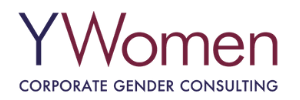How Diversity Directly Impacts A Company’s Bottom Line
 Jilea Hemmings CEO & Co-Founder of Best Tyme wrote series on how diversity can increase a company’s bottom line. Jeffery Tobias Halter was interviewed as part of this series. He shared his backstory, new projects and how diversity impacts a company’s top and bottom line. Here’s a snippet from the interview:
Jilea Hemmings CEO & Co-Founder of Best Tyme wrote series on how diversity can increase a company’s bottom line. Jeffery Tobias Halter was interviewed as part of this series. He shared his backstory, new projects and how diversity impacts a company’s top and bottom line. Here’s a snippet from the interview:
Hemmings: Can you share the top five ways that increased diversity can help a company’s bottom line. (Please share a story or example for each)
Halter: The business case for increased diversity is clear. Simply stated, diversity has a direct impact to a company’s bottom line. Here are five tangible benefits:
- Growing Top-Line Revenue
Women buy or influence literally the entire B2C economy, yet their voices are largely ignored.
How can you grow Top-Line Revenue without genuinely understanding women? Consider the statistics from The Power of the Purse by Fara Warner. Women buy or influence:
91 percent of home purchases, yet most homes are still designed by men.
70 percent of car purchases, yet not a single car maker has figured out what to do with a woman’s purse, other than putting it on the passenger’s side seat.
85 percent of all consumables, yet 89 percent of advertising creative directors are men.
In the next 15 years, women will inherit $40 trillion in private wealth, yet more than 75 percent of personal wealth managers are men, (whom the woman often fires when her husband dies).
In the B2B world, women are sitting on 40 percent of the corporate buying desks. According to a Harvard Business Review study of B2B sales teams, men approach sales transactionally and women approach sales relationally. To quote the article, “You can’t show up with a bunch of 42 longs and expect to be successful.”
Just look at the recent Nike revelations to underscore the impact of not having women working at all levels of their women’s business. According to reports, their market share in a rapidly growing market segment is dismal.
2. Improving Operating Profit
The war for talent is real. Our country does not have enough engineers, scientists, skilled laborers or truck drivers. The war for talent has shifted from the power belonging to the employer to the power belonging to the employee. Consider these facts:
10,000 Baby Boomers (largely white men) are retiring and leaving the workplace every day, every year for the next seven years.
New entries into the workforce are 85 percent women, people of color and millennials. The very face of organizations is changing overnight.
Women are earning 60 percent of the master’s degrees and 58 percent of the bachelor’s degrees.
10 of the largest states in the country have larger populations of people of color than whites, including California, New York and Texas.
Millennials will be the largest percentage of the workforce by 2020 and 75 percent of the workforce by 2024.
3. Employee Engagement
Employee engagement equals productivity. High-performing companies strive for 80 percent engagement. That means in an 8-hour day, my best employees are doing 6.4 hours of productive work. According to USA Today, the average American worker is engaged at a 50 percent level, which means I am paying for eight hours of work, and you are giving me four.
According to a Deloitte study, 78 percent of business leaders rate retention and engagement as urgent or important, but only 15 percent believe they are ready to address it.
Sodexo found that organizations that effectively capitalize on the strengths of all employees and leverage their differences and unique values have the most engaged employees. In addition, employees with the highest level of engagement perform 20 percent better and are 87 percent less likely to leave the organization, according to a survey by TowersPerrin.
4. Innovation
According to a Forbes Study of 300 large companies, 85 percent of companies agree a diverse and inclusive workforce is critical to encouraging different perspectives and ideas that drive innovation.
5. Enhancing/Protecting Company Reputation
Being a great place to work or having an integrated women’s leadership program is a baseline expectation of great companies today. This speaks across all aspects of diversity. Millennial employees are looking at your Human Rights Campaign Index (a barometer of how LGBTQ friendly your company is), as a guide because if you are not LGBTQ friendly, you might not be the kind of place they want to work.
It can protect you against unforeseen circumstances. Starbucks is the latest example of this. In an age where everything can be video recorded and instantly distributed, you are only as good as your weakest manager. Whether it’s a racial issue or sexual harassment, if your company has already been doing work in this area, you will be better prepared for how to respond to the news and immediately get back to business as usual.
You can read the full article on Authority Magazine site.

